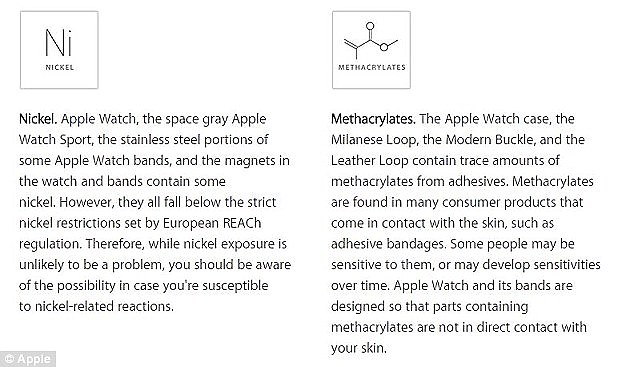Feel the burn? Apple Watches ignite a heated debate online.
The Internet has been ablaze with reports of Apple Watch users posting photos of “burns” they have received from their Apple Watch. Many people have reported that they felt heat from the watches that eventually burned them – but could there be a more likely culprit?
While it may seem unbelievable to those of us old enough to remember a world before plastic watches were enabled with calculators, stopwatches, GPS, and bluetooth, it is entirely possible the Apple Watch is the first metal watch many of the proud owners of this piece of gadgetry have ever worn.
The problem?
The nickel in the Apple Watch steel alloy is a notorious cause of allergic dermatitis, a common occurrence in the general population.
Allergic dermatitis is a hypersensitivity reaction that results in localized stinging, burning, itching, swelling, blistering and redness where the offending agent contacts the skin, often for extended periods of time.
Let’s compare the “burns” people have posted online to textbook image of allergic dermatitis:
wtf? My Apple Watch has burnt a hole in my wrist!! pic.twitter.com/C9zGQhlVBD
— Andrew Terry (@AndrewTerry) July 2, 2015
Not worn my apple watch today, yet there seems to be some sort of burn. Anyone else got this too ? pic.twitter.com/di51Kt4W20
— Dinalli (@Dinalli) June 28, 2015
Apple has acknowledged that some people may have allergic reactions or suffer from skin irritation due to some of the materials used to produce the Apple Watch. To their defense, this is true for almost all metal jewelry alloyed with nickel, including earrings, necklaces, bracelets, and watches. If these reported “burns” are indeed rashes, then it could just be a case of people unaware of their allergic contact dermatitis.
With the advent of smart consumer wearables, I expect to see more cases of allergic dermatitis appear as we continue to mix innovative metals, electronics, and plastics into devices meant to be worn 24/7 on our bodies.
It is also important to note that most excess heat from consumer electronics is caused by either the battery, the CPU, or both. Apple uses a proprietary processor of their own creation called the S1. I was unable to find any spec sheets that provided maximum operating temperatures for these devices.
If the Apple Watch CPU or battery are causing temperatures high enough to burn people, we might expect this heat to also damage the internals of the watch to the point of causing some observable malfunctioning (screen discoloration, color aberrations, freezing, etc.). I haven’t seen this to be the case thus far.
Unfortunately, if the “burn” is actually a contact dermatitis, then the best treatment is to stop wearing the watch. Steroid creams can help improve the rash once the watch is removed, but they won’t keep it from happening or worsening as long as the metal keeps touching the skin. Nickel can even pass through thin clothing, so putting cloth between the watch and skin probably won’t help.
What do you think? Were these “burns” caused by the Apple Watch overheating or by allergic contact dermatitis due to the nickel in the stainless steel alloy? Let us know in the comments!






Your Thoughts